Miss. Delicious #83 : So Fresh and So Clean: How to Store Cut Vegetables !
Dear Steemit friends :
Storing cut vegetables can streamline your cooking in many ways. After chopping the vegetables, it's easy to store them in the refrigerator, and these ready-to-go-veggies can make healthy meals and snacks a snap. Many cut vegetables also freeze well, which can help you preserve the bounty of seasons past and simply make your life easier by making your ingredients recipe-ready.
FOLLOW THESE TIPS FOR STORING CUT VEGETABLES OF ALL SORTS SO THEY RETAIN A PERFECT FLAVOR AND TEXTURE.
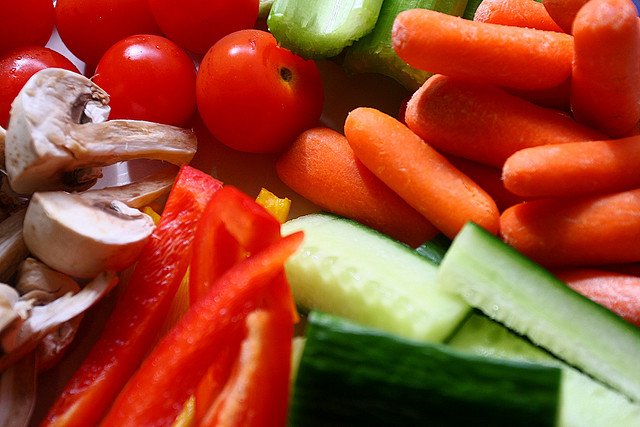
VEGETABLES, LIKE BIRDS OF A FEATHER, TEND TO FLOCK TOGETHER.
So if there's a veggie you don't see on the list, chances are it can adhere to the steps for a similar vegetable. This isn't true 100 percent of the time, but often enough that it is a good starting point.
WHAT IS BLANCHING?
As you read through the list, you'll notice that before freezing, many of the cut vegetables should be blanched. This means that the food in question should be submerged in boiling water for a very short period of time, 30 seconds to 5 or so minutes; you can taste the vegetables to determine your desired level of doneness. Once ready, transfer the vegetables to an ice bath immediately. Once they have cooled, transfer to paper towels to dry and drain excess moisture.
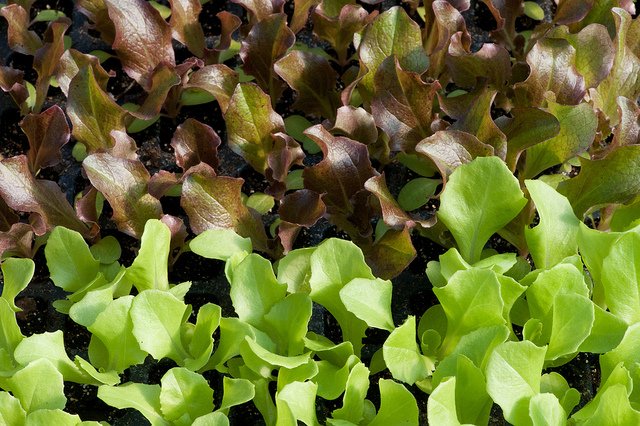
FOOD & COOKING BLOG
So Fresh and So Clean: How to Store Cut Vegetables
By Jessie Oleson Moore on January 29, 2014
Add to Favorites
Pinterest406Facebook103PrintFriendlyEmailMore1.5K
Storing cut vegetables can streamline your cooking in many ways. After chopping the vegetables, it's easy to store them in the refrigerator, and these ready-to-go-veggies can make healthy meals and snacks a snap. Many cut vegetables also freeze well, which can help you preserve the bounty of seasons past and simply make your life easier by making your ingredients recipe-ready.
FOLLOW THESE TIPS FOR STORING CUT VEGETABLES OF ALL SORTS SO THEY RETAIN A PERFECT FLAVOR AND TEXTURE.
Fresh Vegetables - How to Store Vegetables
Photo licensed via Creative Commons by Flickr member suckamc
THE FRESHEST AND HEALTHIEST GIFT
homemade food tags
Do you have a garden overflowing with fresh veggies? If you have extra and want to share the love, use these homemade food tags to gift the healthiest and yummiest snacks to your family and friends!
Download the FREE Guide
VEGETABLES, LIKE BIRDS OF A FEATHER, TEND TO FLOCK TOGETHER.
So if there's a veggie you don't see on the list, chances are it can adhere to the steps for a similar vegetable. This isn't true 100 percent of the time, but often enough that it is a good starting point.
WHAT IS BLANCHING?
As you read through the list, you'll notice that before freezing, many of the cut vegetables should be blanched. This means that the food in question should be submerged in boiling water for a very short period of time, 30 seconds to 5 or so minutes; you can taste the vegetables to determine your desired level of doneness. Once ready, transfer the vegetables to an ice bath immediately. Once they have cooled, transfer to paper towels to dry and drain excess moisture.
Fresh Lettuce: Craftsy
Photo licensed via Creative Commons by Flickr member Photofarmer
LETTUCE, SPINACH AND SIMILAR GREENS
In the refrigerator: Cut or tear the leaves from the end of the head, if applicable. Wash and dry the leaves thoroughly (such as in a salad spinner). Remove any dead or wilted leaves. Once dry, place in one or two thin layers on top of paper towels. Gently roll the towels, so that you have almost like a jelly roll cake, but the cake is the paper towel and the filling is the greens. Secure with a rubber band.
In the freezer: Freezing leafy greens is not suggested, as they will soften too much and won't retain their crispy texture.
"Wilted" greens, such as cooked kale, spinach or beet greens, can be frozen once cooked; drain thoroughly and store in freezer bags for up to a year.
ARTICHOKES
Primarily, you will store the hearts. You can sprinkle the heart with a little lemon water and refrigerate in an airtight container for up to 3 days.
ASPARAGUS
Trim the ends of asparagus, and place in a jar or container of water, almost as if the asparagus stalks are flowers in a vase. Place a plastic bag loosely on top of the stalks to keep them from absorbing scents from other foods in the fridge.
To freeze, blanch the cut asparagus, drain thoroughly, and store in freezer bags.
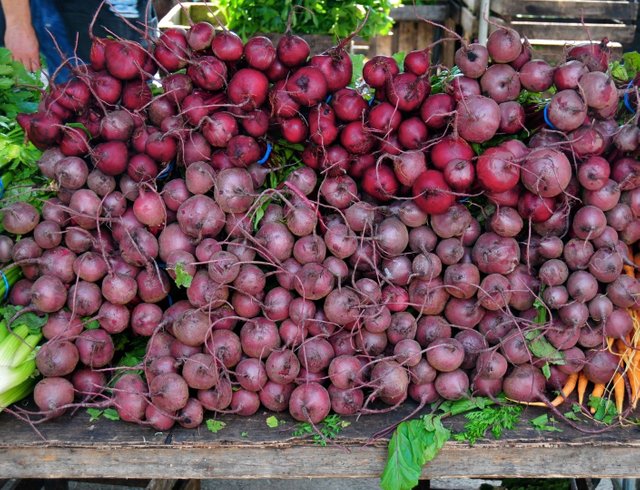
BEETS
Be sure to remove the root first thing, leaving 1-2 inches of stem. The greens can be stored like lettuce and greens, but they have a short shelf life in the fridge. Cut beets can be stored in a container lined with a moist paper towel in the refrigerator.
To freeze, place the cut, cooked or uncooked beet pieces in a freezer bag. Frozen beets that have been pre-cooked will retain more of their texture, but uncooked beet pieces are suitable as a component in recipes where texture won't matter as much, such as to puree for either a flavorful soup or an ingredient in a creative cake.
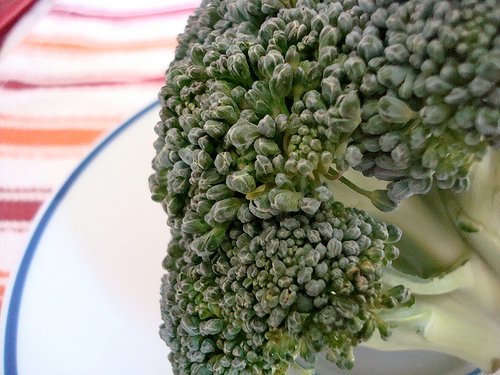
BROCCOLI
Once cut, broccoli will maintain its moisture if you store it between lightly moistened paper towels and store in the refrigerator. Do not put it in an airtight container, as it needs to breathe to maintain freshness.
To freeze, blanch broccoli, drain thoroughly, and store in freezer bags for up to a year.
BRUSSELS SPROUTS
If you have halved or quartered your sprouts, store them as you would cut broccoli, following the same instructions for refrigeration and freezing.
CABBAGE
Once cut, cabbage should be wrapped tightly in plastic and put in the refrigerator. It should be used within a few days. Freezing cabbage is not suggested, but it can be pickled for longer keeping.
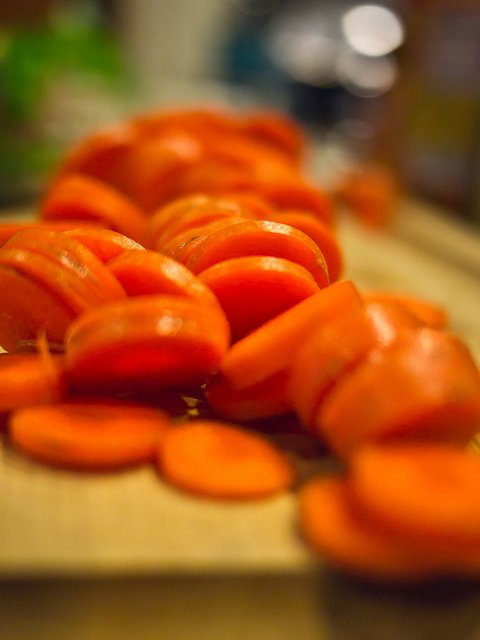
CARROTS
Fresh cut carrots can be kept in plastic bags in the refrigerator, but to prevent them from drying out, either wrap them in moist paper towels or store in cold water. Loosely cover the water to ensure no debris gets into the water, but don't use an airtight container.
To freeze, blanch carrots, drain thoroughly, and store in freezer bags for up to a year.
CAULIFLOWER
Store cut cauliflower as you would cut broccoli, but be aware that cauliflower not only loses its flavor quickly once cut (unless it is frozen) but is also particularly sensitive and absorbent to other flavors in the refrigerator, so if refrigerating, try to use the cauliflower as soon as possible.
CELERY
Cut celery can be treated the same as cut carrots in terms of refrigeration and freezing. However, once thawed, celery that as been frozen loses its crisp texture, so it is best used as a component in a recipe where a crisp texture is unimportant, such as a stew.
CUCUMBERS
Wrap cut cucumbers in an airtight bag or tightly with plastic wrap, and store in the crisper of your refrigerator for up to 3 days.
Cucumbers are not suggested for freezing.
EGGPLANT
Be aware that eggplant does not age well, but it is possible to refrigerate it if you are in a pinch. Layer sliced eggplant in a container between sheets of paper towel for up to 2 days. Brushing a few drops of lemon juice on top can reduce browning.
To freeze, blanch slices of eggplant, drain thoroughly, and store in freezer bags for up to one year. Be aware that the texture will suffer once thawed, so consider using the frozen eggplant in recipes where the texture is not of great importance, such as baba ghanoush or ratatouille.
GARLIC
Place cut garlic in an airtight container as soon as possible after it is cut, and store it in the refrigerator for up to 2 days.
To freeze, wrap the garlic tightly in plastic wrap or aluminum foil, and place in an airtight freezer bag. It will keep for up to a year.
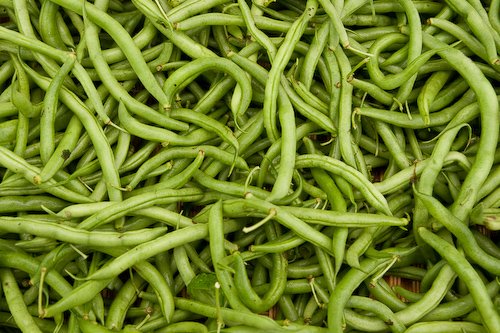
GREEN BEANS
To store cut green beans in the refrigerator, wrap with plastic wrap or store in a plastic bag.
To freeze, blanch the cut green beans, drain thoroughly, and store in freezer bags for up to a year.
LEEKS
Because they can impart a flavor on other foods in your fridge, keep cut leeks in an airtight container or bag, and store in the refrigerate for 3 to 5 days.
To freeze, blanch leeks, drain thoroughly, and store in freezer bags for up to a year.
OKRA
Cutting okra in advance is not suggested, as it can get messy and slightly ooze. It is suggested you cut it as close to the time you'll be using it.
Okra can be frozen, but it must be blanched before it is sliced. Once blanched and sliced, store in freezer bags for up to a year.
ONIONS
Place cut onions in an airtight container as soon as possible after it is cut, and store it in the refrigerator for 3 to 5 days.
To freeze, wrap the onions tightly in plastic wrap or aluminum foil, and place in an airtight freezer bag. They will keep for up to a year.

PARSNIPS
Fresh cut parsnips can be kept in plastic bags in the refrigerator, but to prevent them from drying out, either wrap them in moist paper towels or store in cold water. Loosely cover the water to ensure no debris gets into the water, but don't use an airtight container.
To freeze, blanch cut parsnips, drain thoroughly, and store in freezer bags for up to a year.
PEPPERS
Store cut peppers in plastic wrap or in a plastic bag for up to 2 days in the refrigerator. To keep them from getting slimy, wrap in a sheet of paper towel.
To freeze, place the slices of pepper in a single layer on a plate or cookie sheet, and freeze until crisp. Transfer to a freezer bag, and store for up to 6 to 8 months.
POTATOES
Store cut potatoes in water for up to 1 day, loosely covered in the refrigerator.
To freeze, blanch cut potatoes, drain thoroughly, and store in freezer bags for up to a year.

RADISHES
Fresh cut radishes can be kept in plastic bags in the refrigerator, but to prevent them from drying out, either wrap them in moist paper towels or store in cold water. Loosely cover the water to ensure no debris gets into the water, but don't use an airtight container.
Radishes do not freeze well, cut or uncut.
RHUBARB
Yep, it's a vegetable, and since it has a rather short season, it's very helpful to freeze rhubarb so that you can use it for delicious homemade pies all year long. Store cut rhubarb wrapped in plastic or in a container that breathes slightly in the refrigerator for up to 5 days.
To freeze, place the slices of rhubarb in a single layer on a plate or cookie sheet, and freeze until crisp. Transfer to freezer bags or airtight containers, and store for up to 6 to 8 months
SQUASH
Store cut squash tightly wrapped in plastic in the refrigerator for up to 3 days. Keep in mind that squash readily absorbs the flavor and scent of other items around it, so keep it away from strong-smelling leftovers or foods.
It is suggested that you cook squash pieces before freezing them. Cook or bake until softened, let cool completely, and place in freezer bags or airtight containers. The cooked cut squash will keep for up to 6 to 8 months.
TOMATOES
Technically, tomatoes are a fruit, but since they are frequently used with vegetables, they are included on this list.
Cut tomatoes do not refrigerate well. However, if you have cut a portion of the tomato, you may be able to salvage the rest if you place it, cut side down, on a plate, and cover loosely. It will keep at cool room temperature for up to a day.
Tomatoes do not freeze well, sliced or unsliced.
TURNIPS
Wrap cut turnips tightly in plastic and place in the refrigerator for 2 to 4 days. To keep slices from browning, mist lightly with lemon juice.
To freeze, blanch cut turnips, drain thoroughly, and store in freezer bags for up to a year.
ZUCCHINI
To freeze, blanch cut zucchini, drain thoroughly, and store in freezer bags for up to a year. It is suggested you cut off the seeded portion before blanching and freezing.
Someone give me a good reason why this comment was hidden due to low ratings,